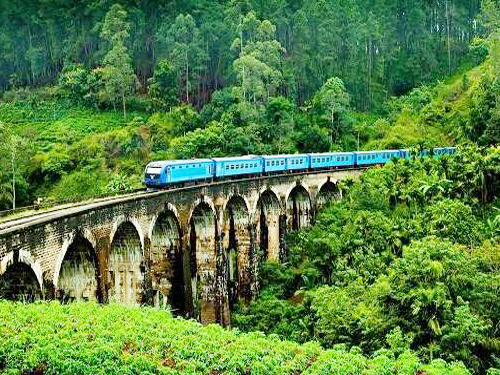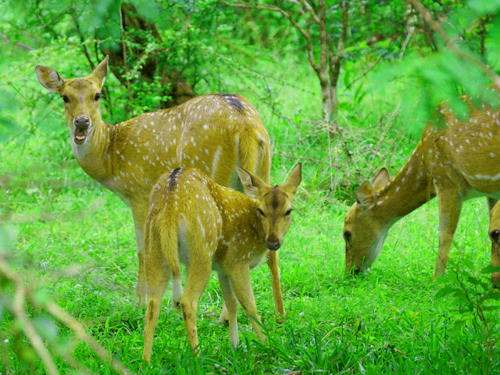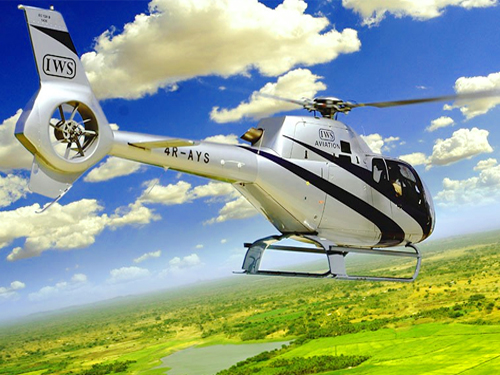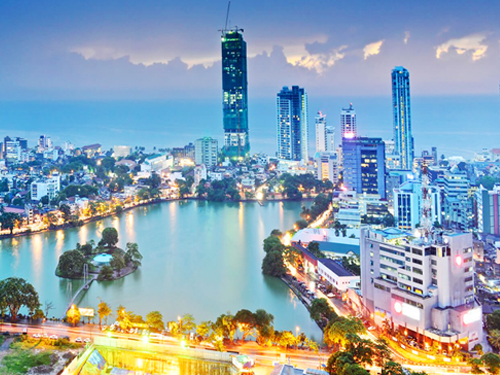Kumana in Sri Lanka
KumbukkanOya is the southern border of the national park. The national park has 20 lagoons and tanks that support extensive birdlife. They are less than 2m (6.6ft) deep. Kumanavillu can be inundated with seawater from time to time. The area's elevation ranges between sea level and 90 metres (390 ft). The area gets 1,300 millimetres (51.18 inches) of annual rainfall and has a mean temperature of 27.30 degrees Celsius (81.14 degrees F).
Kumana is part of an ancient civilization dating back to the 3rd Century BC. The region also contains rock inscriptions from the 2nd and the 1st centuries BC. Kumana National Park is located on the route for the annual foot Pilgrimage towards the Hindu temple at Kataragama. This pilgrimage is shared by both Sinhalese and Tamil communities.
In recent years, the number of birds seen in the national park have declined. Wildlife lovers and environmentalists have voiced concern about a proposed road that will run from Kirinda to Panama, which will run along the coast of the national park.
Kumana National Park Sri Lanka, originally called Yala East National Park. It was renamed Kumana National Park on June 6, 2006. It is situated at an elevation of between sea level and 90 metres. The average annual temperature is 27 degrees Celsius and the annual rainfall is 1,300mm.
Birders who visit Kumana Park are often amazed by the diversity of the species they see. This can be attested to through the presence of 20 tanks and lagoons. The tanks, which are usually less than two metres deep, are frequently flooded by seawater. They also often dot the Park's landscape. Within the Kumana National Park boundaries, the Kumana Bird Sanctuary was designated a protected area in 1938. It is considered one of the most important breeding areas in Sri Lanka.Here are cave inscriptions that date back to the 1st or 2nd Centuries BC. Annual pilgrimages of Hindu and Buddhist devotees cross the Kumana region on foot to the Temple in Kataragama.
The Kumana National Park's extensive birdlife is supported by around 20 tanks and lagoons. The KumanaVillu can be inundated with seawater from time to time. The area's elevation is between 90 and sea level. It has a mean annual temperature of 27 degrees Celsius and receives 1,300mm of rainfall annually.
The park's wetland area is surrounded by tropical thorn forest in the dry zone. ManilkaraHexandra, Hemicycleasespieria, Bauhinia racemosa and Cassia fistula are the dominant species of the inland forest's floral flora. Sonneratiacaseolaris is the dominant tree in the Kumanavillu, and Typhaangustifolia the dominant reed. The riverine forests of the KumbukkanOya are dominated by Terminaliaarjuna. Common aquatic plants in the swamp include Nymphaeapubescens and Nylumbonucifera as well as Nymphaeapubescens and Nymphaeanucifera. Neptuniaoliverea.
Kumana Bird Sanctuary was established in 1938 and is now part of the Kumana National Park. Kumana is a key bird breeding and nesting ground. Sri Lanka . The national park has been home to 255 species birds. Tens of thousands of birds are found from April through July. Migrate to the Kumana swamp region
Kumana is an important national park for birdlife. This area has been home to an incredible 255 bird species. During April and July, thousands of birds migrate to Kumana swamp. While the waders, waterfowl, and some rare species like the Black-necked Stork and Lesser Adjutant are the breeding residents, the Great Thickknee and the Lesser Adjutant are also present.
Glossy Ibis and the Asian Openbill are among the most common migrant birds. The Glossy Ibis is also a great bird. The Yellow-footed Green Pigeon and the Greater Rackett-tailed Drongo are rare migrant birds.
Common Mullet and Tilapia are two of the fish species that can be found in the tanks and lakes. Because of its location on the coast, turtles can sometimes be seen coming ashore to lay eggs. These turtles include both the Indian Black and Indian Flap-shelled. You can also see mugger crocodiles here.
The Kumana National Park is home to birdlife throughout the year. However, the best time to see them is in the first half year when they are full.
Two routes lead from Colombo. They fork at Pelmadulla, meet at Wellawaya again, and go via Beragala or Koslanda. The other goes via Thimbolketiya (Udawalawe) and Thanamalwila. The road from Wellawaya passes through Moneragala and Pottuvil, as well as Panama. From Panama, there is only one entry to the Park. It is through the Kudumbigala Sanctuary. Distance from Colombo to the Park is 391 km. You can also fly from Colombo (Peliyagoda), and then land at Arugam Bay. You can then drive to Kumana National Park from there. You can also fly by helicopter from Ratmalana or Bandaranaike Airport. Once you land in Kumana, the Park will be reached via road.
Sri Lanka's bird's paradise. The Kumana Bird Sanctuary, home to migrant birds as well as large flocks of birds, covers 35,000 hectares. It is the country's most renowned bird sanctuary. In May and June, waterbirds nest in the 200-hectare mangrove swamp known as 'KumanaVillu.
Kumana National Park also known as Yala East National Park, is located in south-east Sri Lanka's Ampara district. It is 391 km from Colombo. Panama is the gateway to Kumana National Park. Okanda is 22km south-west of Panama.
The Kumana National Park is located in the southeast corner Sri Lanka. It covers 18,149 hectares. There are more than 215 species that make up the park, each one unique and spectacular.

 Safe Travels
Safe Travels Français
Français Deutsch
Deutsch עִברִית
עִברִית Italiano
Italiano Nederlands
Nederlands Polski
Polski Pусский
Pусский Español
Español














































